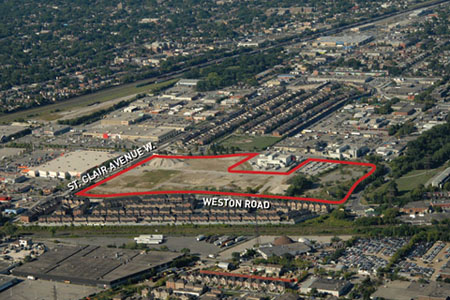This article is from our Toronto Feature series. Features from past programs are not updated.
This content is from a series created in partnership with Museum Services of the City of Toronto and Heritage Toronto. We gratefully acknowledge funding from the Ontario Ministry of Tourism, Culture and Sport, and the Department of Canadian Heritage.
"Stockyards Reinforce 'Hogtown' Reputation"
Toronto's reputation as "Hogtown" did not start in the Junction, but it was here that the reputation was forged. Like many industries, the stockyards were attracted to the Junction by the many rail connections that give the neighbourhood its name. In the Junction, you could get goods to and from any part of the country.
The Union Stock Yards (later the Ontario Stock Yards) first opened in 1903 at the southwest corner of Keele and St Clair. They were mostly known for dealing in cattle and hogs, although for many years the stockyards also dealt in horses. Frequently, animals would escape and it was not uncommon for local firefighters to be called in to wrangle a stray cow that had wandered onto a busy street.
The stockyards were a place where live animals were brought to be sold. Their presence, however, soon attracted many meat-packing companies that would buy animals and butcher them. These companies were for many years a major source of jobs in the area, and a major source of unpleasant smells.
The stockyards closed in the early 1990s and in recent years the land has been redeveloped as big-box retail space.

 Share on Facebook
Share on Facebook Share on X
Share on X Share by Email
Share by Email Share on Google Classroom
Share on Google Classroom





